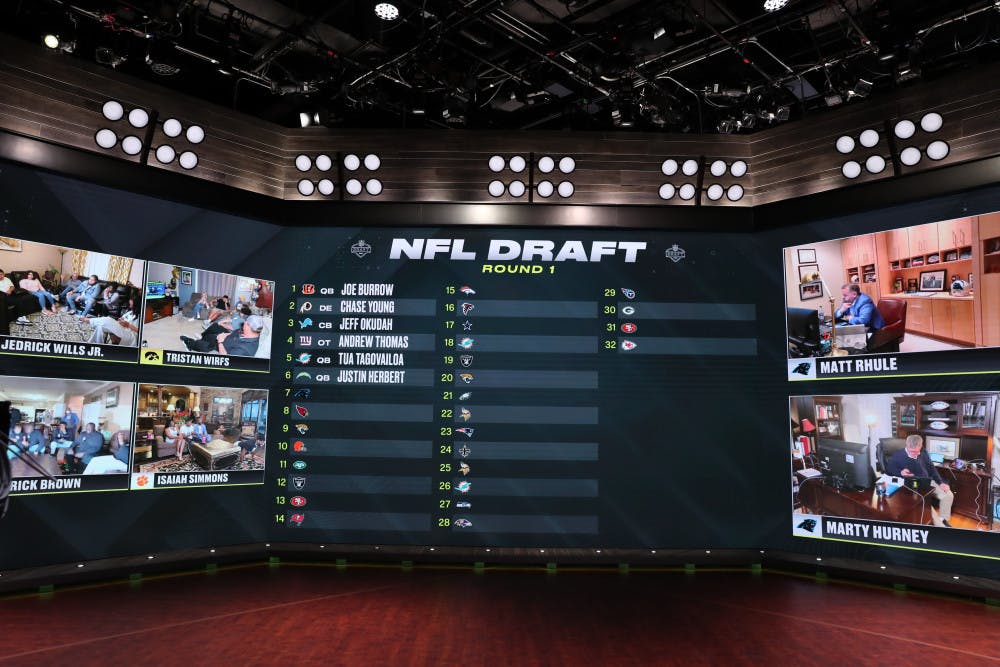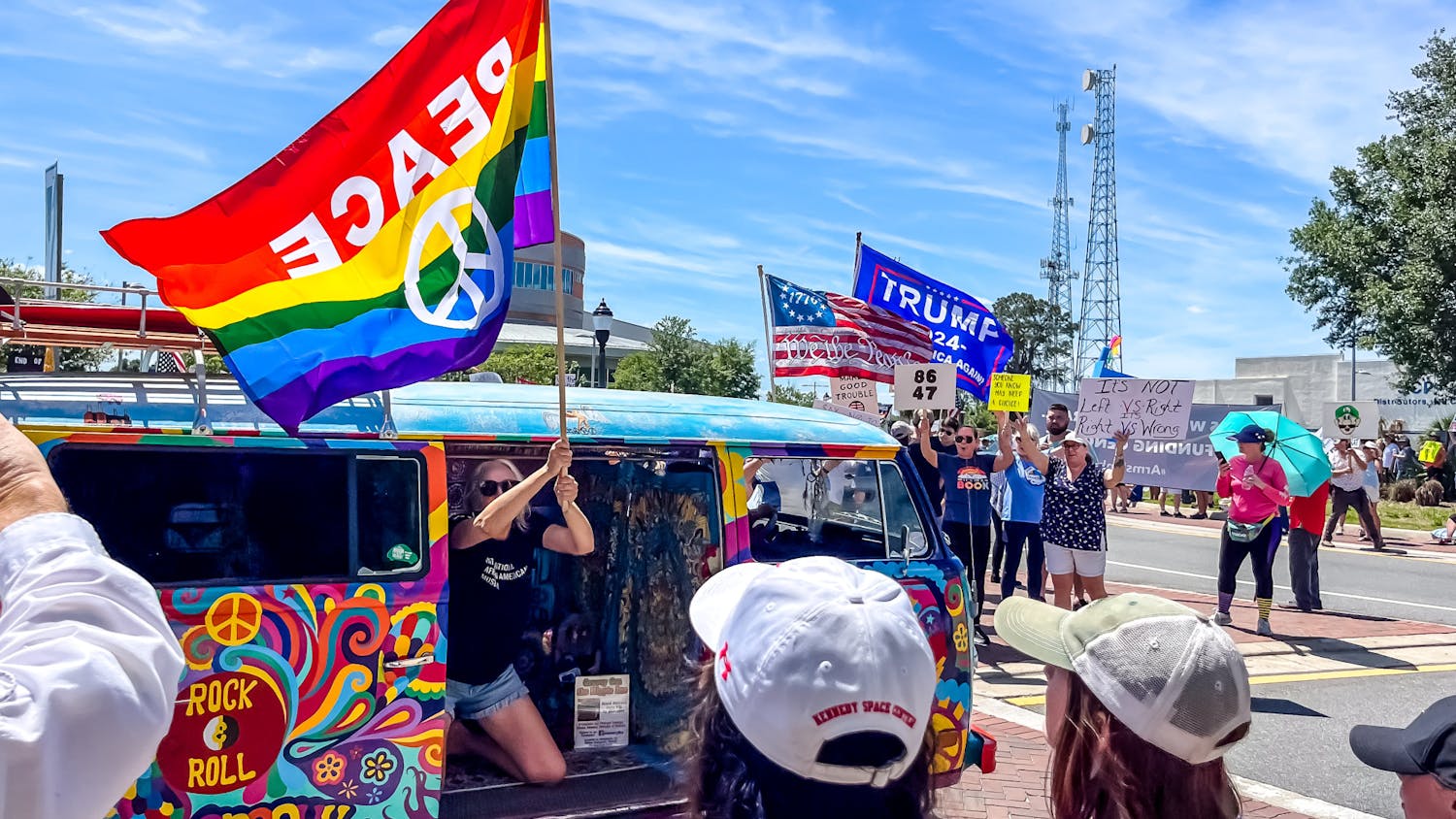I watched the NFL Draft this past weekend closer than I have ever before.
That could be a result of quarantine making sure I was in front of a TV for rounds two and three or my vested interest having covered the Gators football team in the fall. For sports fans -- especially this year -- the draft is marked on calendars nationwide. It’s hope and despair and excessive praise and critique all wrapped into one commercialized way-too-long event. Some would say those things make it even more American than football itself.
So, yeah, for me, the draft is cool. I get to look over to the person next to me and tell them that I covered some of Jerry Jeudy’s games in high school and that I saw a heck of a lot of first-round picks play in person.
But for the players getting drafted, it’s the biggest day of their lives.
It means they reached the pinnacle of their career. For many, it means millions of dollars -- it means security. Their moment should be a reflection of their athletic career, and the blood, sweat and pain required of them to become the 1.6 percent of football players who are drafted out of college.
It shouldn’t mean a bullet point or a brief segment proclaiming the worst thing to ever happen to the draftee crammed in before the next pick.
After players were drafted, ESPN did a quick hit on each one to give the audience a picture of said player.
Some examples:
“Hometown: Bakersfield, CA.”
Okay, cool. Establishing the hometown. Shoutout.
“Grew from 5’7 to 6’1 junior year of HS.”
Wow! That’s why he’s an NFL receiver and I’m writing about him.
“100m sprinter on HS track team.”
Dual athlete! Nice.
“Mother, Annie, contracted and survived West Nile Virus in 2012.”
Umm, what?
“Mom, Camillia, fought drug addiction for 16 years.”
Wait, that doesn’t have anything to do with the player.
There’s great power in a two-line info box when the third line is not especially relevant to the NFL draft and cannot be unpacked in the time given. A 60 Minutes interview with said NFL player is the time to dig deep, not a time-sensitive event where the new material keeps on coming.
Addiction and death in the family shouldn’t be a resume line for an athlete.
Weirdly enough, while watching the draft, I was delaying writing a paper for a class that touches on these very topics. It discusses shortcomings in coverage of humble beginnings stories, which is exactly what this was: selective inclusion of tragedy to make an incredible accomplishment seemingly mean more.
I think the root issue is we -- fans and sports media -- make underdog stories an all-encompassing category.
Someone bouncing back after not making their high school basketball team and having a successful career (sound like anyone you know?), that's an underdog story.
Bouts with addiction and the deaths of family members and friends shouldn’t be grouped in with a feel-good anecdote that can be turned into a Mike Lupica book. And those tragic events especially shouldn’t be reduced to tweet-length statements.
Tee Higgins, a former Clemson wide receiver drafted by the Bengals early in the second round, addressed one of the bullet points that mentioned his mother’s bout with addiction.
“I’m proud of my mom for turning her life around for me and my sister! I have no problem with them showing the world that my mom is a true fighter,” he tweeted.
Good for him and, more importantly, good for her.
But this gets to the gripe I raised in my paper -- it’s not irresponsible to include such facts. It would seem that the motivation behind the inclusion was implied motivation for Higgins. But it wasn’t fleshed out. Because it couldn’t be in the alloted time. That’s what made it irresponsible.
ESPN issued a statement to the Washington Post apologizing for the Higgins graphic -- which was not the only of its ilk.
“We want our draft coverage to personalize players and, where appropriate, acknowledge the obstacles they’ve had to overcome on their journey to the NFL. This graphic lacked proper context,” it read in part.
I agree that this information, with proper context, humanizes Higgins and his story. Without the context? It’s an attempt at a feel-good story that was irresponsibly included.
Do it right, or don’t do it at all.
In a photo provided by ESPN Images, the first six selections in the NFL draft are displayed during ESPN's coverage of the NFL football draft, Thursday, April 23, 2020, in Bristol, Conn. (Allen Kee/ESPN Images via AP)






